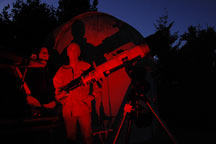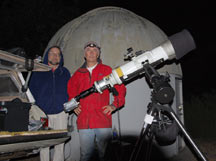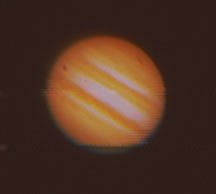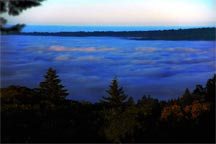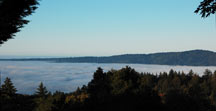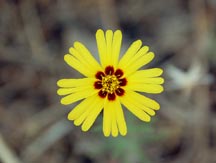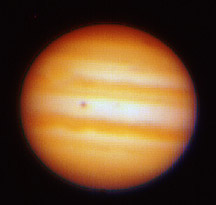
From Chris' camcorder footage.
Best 100 of 150 frames, earlier this night. That's Io's shadow on Jupiter
at center. The impact scar is just peeking around the upper right limb,
and the Great Red Spot is at upper left.
|
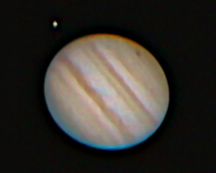
My first successful .avi
stack using Registax 5. 80% quality limit, best 1312 frames. Wavelet
sliders: 84:53:2:1:1:1. Photoshop: smart Sharpen,saturation, median
filter, crop, jpg. Io has emerged from transit, and the impact scar
is just past the meridian at upper right.
|
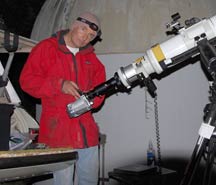
The tilt of the telescope
shows Jupiter was setting low by now, and the heavy weight of my camcorder
+ 40mm Scoptronix eyepiece probably bent the optical path enough to
cause the blue and red refraction error rims and warping of Jupiter's
shape on my image. Chris' picture was taken with Jupiter higher, and
with the much lighter ToUcam on the back end at prime focus.
|
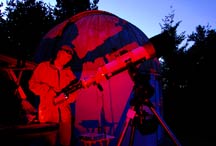
I thought the shadows on the dome
made by the red LED headlamp, against the blue dawn, made for a bizarre
picture.
|
